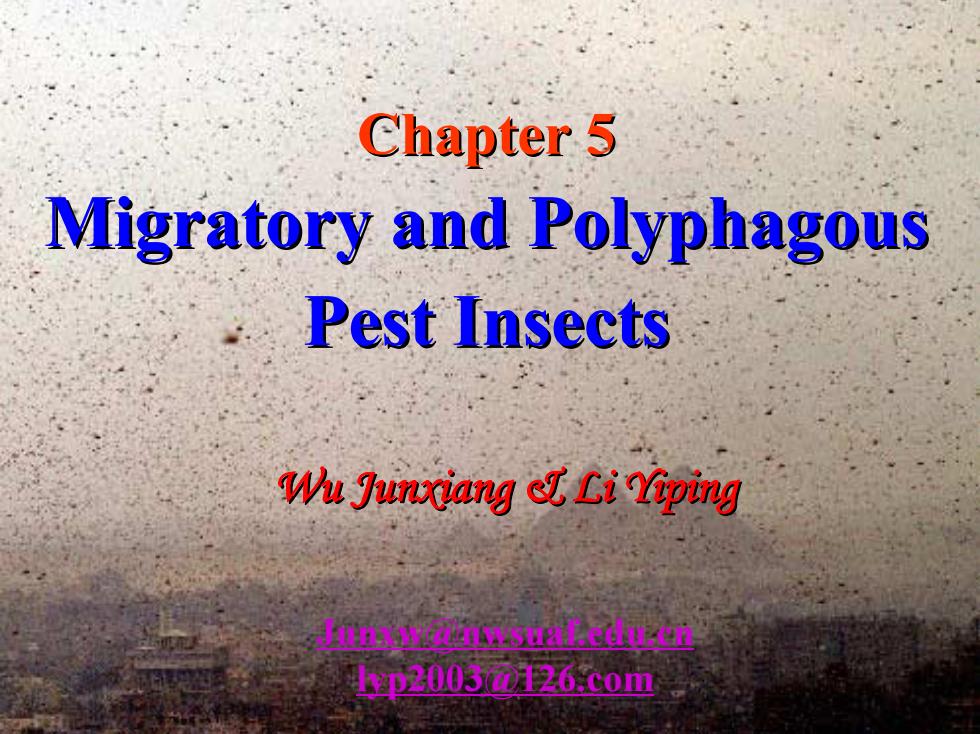
Chapter 5 Migratory and Polyphagous Pest Insects Wu Junxiang可Li Yiping 他. 1003coi▣
+ Chapter 5 Chapter 5 Migratory and Migratory and Polyphagous Polyphagous Pest Insects Pest Insects Wu Junxiang Junxiang & Li Yiping Junxw@nwsuaf.edu.cn lyp2003@126.com
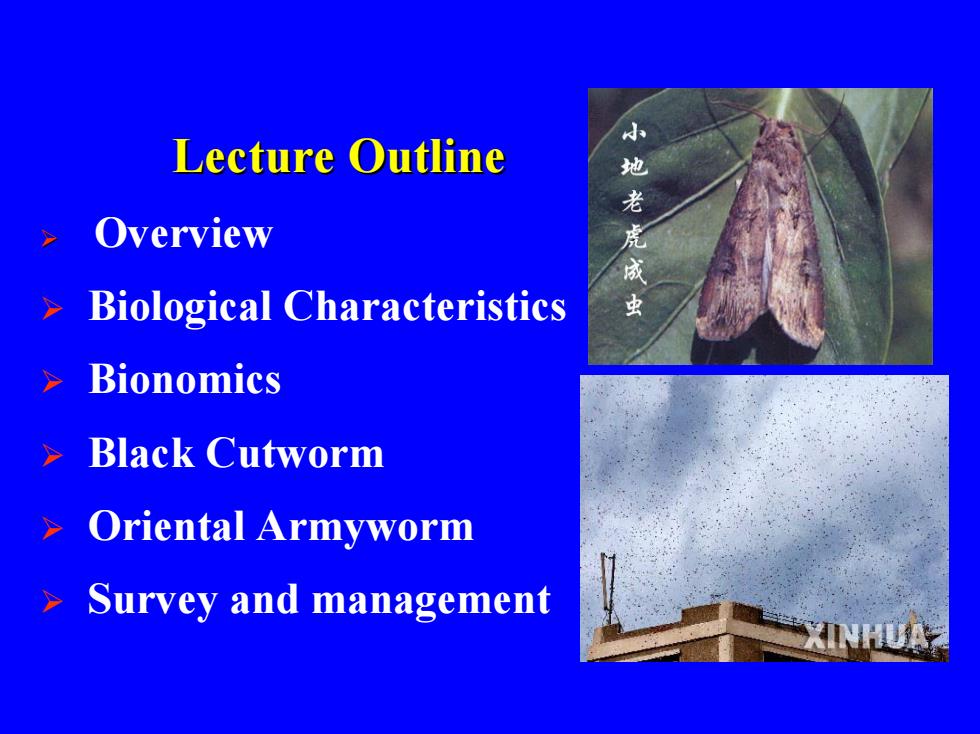
Lecture Outline Overview 小地老虎成 Biological Characteristics 虫 Bionomics Black Cutworm Oriental Armyworm Survey and management
Lecture Outline Lecture Outline ¾ Overview ¾ Biological Characteristics ¾ Bionomics ¾ Black Cutworm ¾ Oriental Armyworm ¾ Survey and management

OVERVIEW 1.Definition of migratory pests Annually migrate a long distance at the same season each year; Heredity characteristics suitable for environments. 2.Migratory Advantages Decreasing interspecies competition; Escaping from environmental disadvantages
1. Definition of migratory pests Annually migrate a long distance at the same season each year; Heredity characteristics suitable for environments. 2. Migratory Advantages Decreasing interspecies competition; Escaping from environmental disadvantages. OVERVIEW OVERVIEW
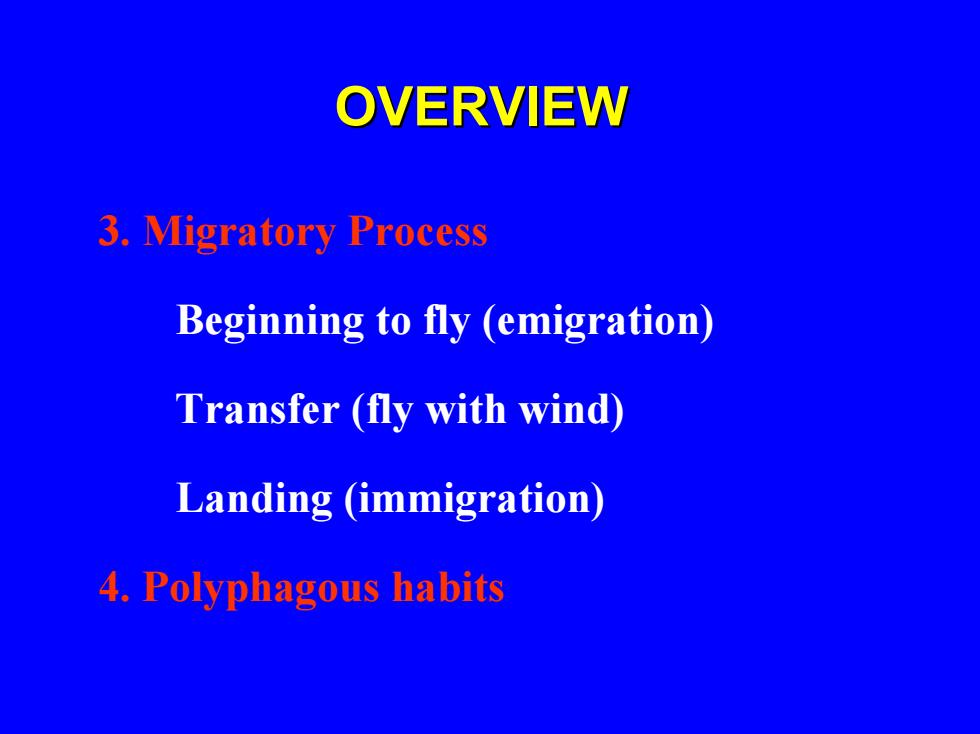
OVERVIEW 3.Migratory Process Beginning to fly (emigration) Transfer (fly with wind) Landing (immigration) 4.Polyphagous habits
3. Migratory Process Beginning to fly (emigration) Transfer (fly with wind) Landing (immigration) 4. Polyphagous habits OVERVIEW OVERVIEW

OVERVIEW 5.Categories More than 10 species recorded in China. Typical migratory species include: Black cutworm Agrotis ypsilon; Oriental armyworm Leucania separata; Beet armyworm Laphygma exigua; Cnaphalocrocis medinalis(稻纵卷叶螟); Brown rice planthopper Nilaparvata lugens; White-backed rice planthopper Sogota furcifera
5. Categories More than 10 species recorded in China. Typical migratory species include: Black cutworm Agrotis ypsilon; Oriental armyworm Leucania separata; Beet armyworm Laphygma exigua; Cnaphalocrocis medinalis (稻纵卷叶螟); Brown rice planthopper Nilaparvata lugens; White-backed rice planthopper Sogota furcifera. OVERVIEW OVERVIEW

粘 虫 小地老虎成虫 甜菜夜蛾 稻纵卷叶螟 稻褐飞虱 白飞
粘 虫 稻纵卷叶螟 稻褐飞虱 白背飞虱 甜菜夜蛾
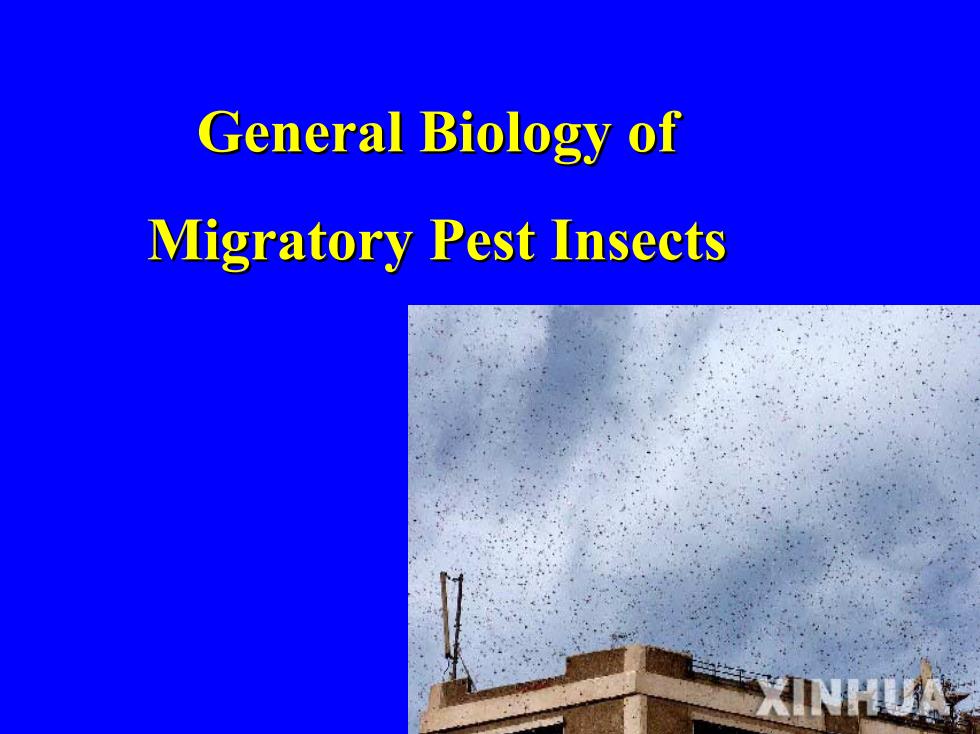
General Biology of Migratory Pest Insects
General Biology of General Biology of Migratory Pest Insects Migratory Pest Insects
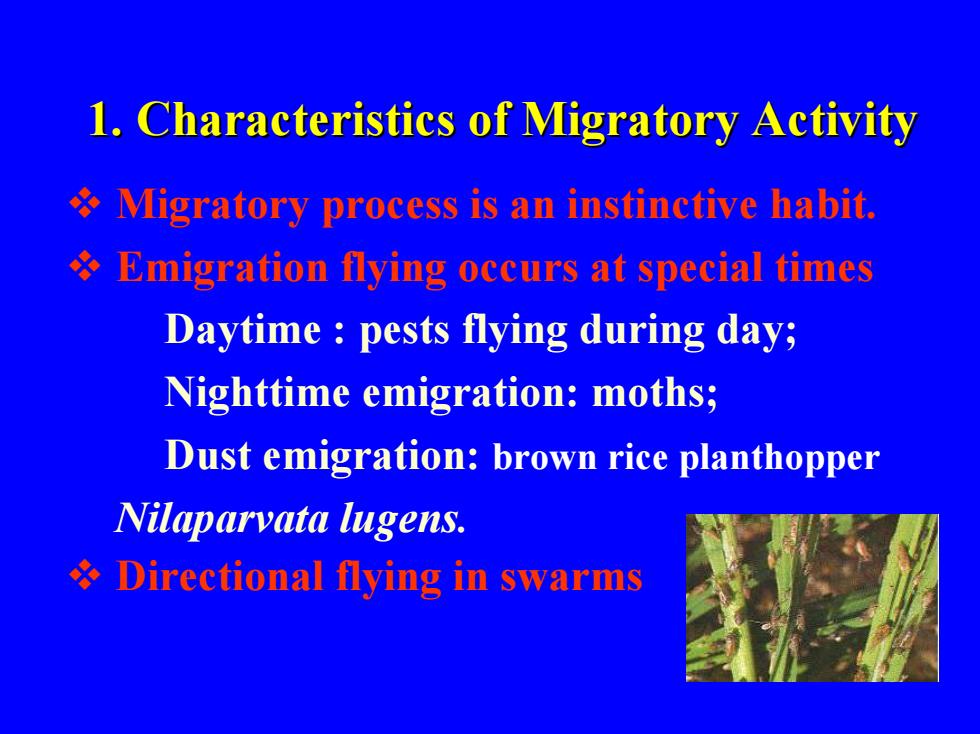
1.Characteristics of Migratory Activity Migratory process is an instinctive habit. *Emigration flying occurs at special times Daytime pests flying during day; Nighttime emigration:moths; Dust emigration:brown rice planthopper Nilaparvata lugens. Directional flying in swarms
Migratory process is an instinctive habit. Emigration flying occurs at special times Daytime : pests flying during day; Nighttime emigration: moths; Dust emigration: brown rice planthopper Nilaparvata lugens. Directional flying in swarms 1. Characteristics of Migratory Activity Characteristics of Migratory Activity

2.Development and Reproduction Migratory flying is synchronous with development of adults.Especially has a close relationship with female development. Migratory flight occurs before female reproduction.Ovaries stop developing during flight.Eggs are laid after landing. Mating can happen before flight,during flight or after flight
Migratory flying is synchronous with development of adults. Especially has a close relationship with female development. Migratory flight occurs before female reproduction. Ovaries stop developing during flight. Eggs are laid after landing. Mating can happen before flight, during flight or after flight. 2. Development and Reproduction Development and Reproduction
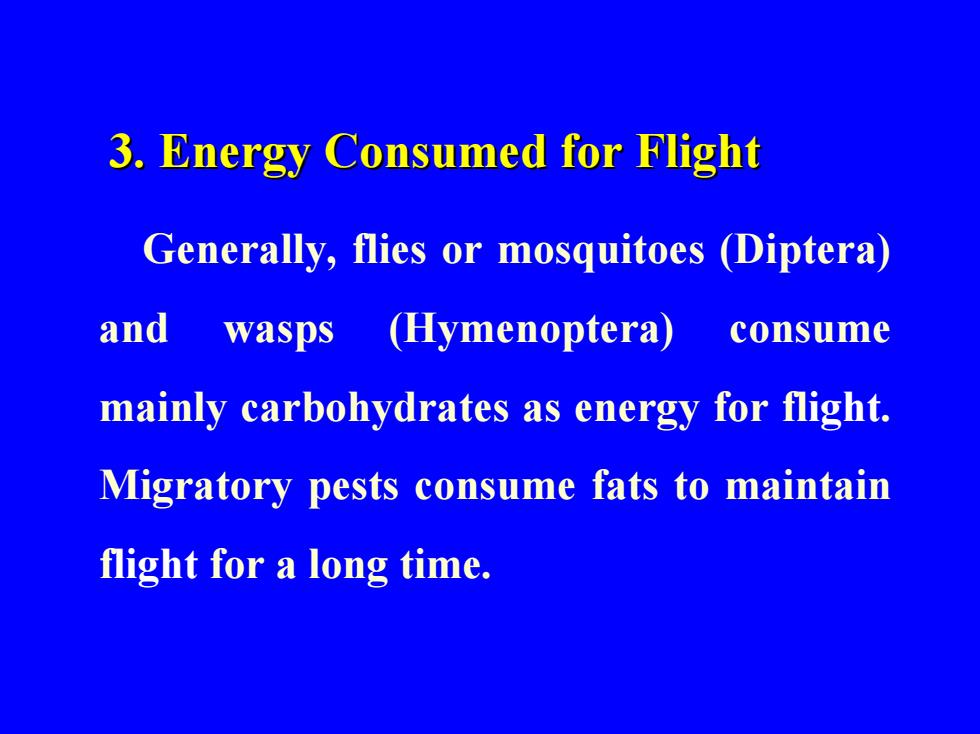
3.Energy Consumed for Flight Generally,flies or mosquitoes (Diptera) and wasps (Hymenoptera) consume mainly carbohydrates as energy for flight. Migratory pests consume fats to maintain flight for a long time
Generally, flies or mosquitoes (Diptera) and wasps (Hymenoptera) consume mainly carbohydrates as energy for flight. Migratory pests consume fats to maintain flight for a long time. 3. Energy Consumed for Flight Energy Consumed for Flight